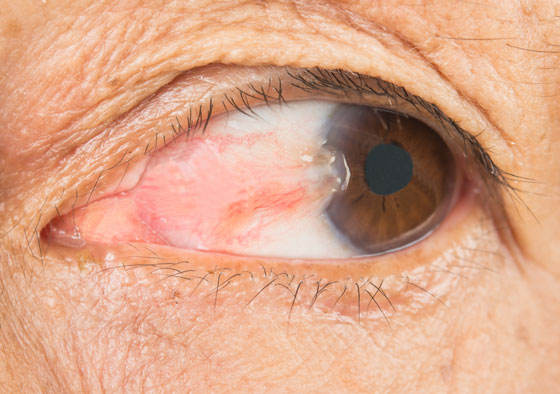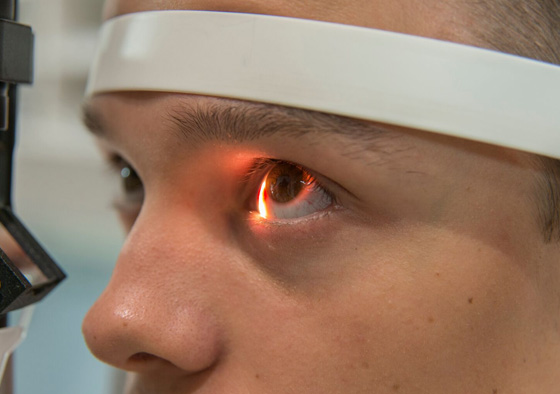What is a pterygium?
A pterygium (pronounced te-rij-ee-um) is a pink, fleshy, triangular growth on the surface of the eye. It is a common condition: around one in every 100 Australians develops a pterygium.
It grows from the conjunctiva, which is the membrane covering the white part of the eye. Over time, it can grow onto (and across) the cornea, which is the clear ‘window’ part of the eye.
You may have a pterygium in one or both eyes (the plural for pterygium is pterygia). They usually grow from the inner (nasal) corner of the eye.
Although it’s a growth, a pterygium is not a cancer.
If the pterygium grows across your cornea, it can affect your vision. It will also become more obvious, as it shows up more against the background of your iris and pupil.

What causes a pterygium?
There is no one single cause of a pterygium.
Instead, there are several risk factors such as:
- Sun exposure – people who spend a lot of time outdoors in sunny weather are more likely to develop pterygia. This is how pterygia got the name “surfer’s eye”
- Living or working in dusty, windy or sandy environments
- Age – like many conditions, risk of pterygium increases with age
Often a combination of these factors come together to cause a pterygium.
What are the symptoms of a pterygium?
For most people, a pterygium is something they can see in the mirror but cannot feel.
Sometimes the pterygium can cause symptoms of irritation including:
- An itchy or burning sensation
- Mild eye pain
- Red (or bloodshot) eye
As the pterygium grows across the cornea, you can have problems with your vision. In this situation, surgical treatment may be required.
How is a pterygium diagnosed?
You don’t need any special tests. A pterygium is diagnosed on how it looks.
If you think you have a pterygium, you can have the diagnosis confirmed by your GP, ophthalmologist or optometrist.
How is a pterygium treated?
There are a few different treatment options. The treatment you need depends on the severity of the condition.
Options include:
Sun protection
If the pterygium is small, painless and not causing any vision problems, you may simply need to wear a hat and sunglasses when outdoors. This tends to stop the pterygium’s growth.

Eye drops
If you are experiencing symptoms of irritation or inflammation, you may be given lubricating or medicated eye drops or ointments.
Surgery
Surgery is the only treatment that can remove a pterygium. It is the only effective treatment when a pterygium is growing onto the cornea and threatening to cause vision problems. You may also want to have the pterygium removed for cosmetic reasons.
Pterygia may grow back despite successful surgery.
Can I prevent a pterygium?
The best way to prevent a pterygium is to protect of your eyes from the sun. Choose sunglasses that are UV-protecting and preferably ones that wrap around. These can protect from both the sun and dust.
